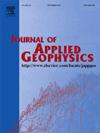用谱比法分析地震和微震记录得到的土-结构相互作用的比较
IF 2.2
3区 地球科学
Q2 GEOSCIENCES, MULTIDISCIPLINARY
引用次数: 0
摘要
在既有结构中安装强地震动测量装置,监测结构是否会发生破坏,对地震工程和建筑安全具有重要意义。本文采用不同的谱比方法从地震和噪声记录中确定了结构和地面的主导振动周期和放大特性,并对结果进行了比较。为此,在线监测的加速度计装置被放置在一座5层公共建筑的顶层,该建筑于2008年进行了改进,在建筑的地面上,以及距离该建筑约1公里的岩石上。采用MASW测量来确定加速度计装置安装在建筑物旁边的地面上的区域的地面等级。许多不同距离和震级的地震记录都是通过安装在建筑物、地面和岩石上的固定装置获得的。参考台站法采用谱比法,单台站法采用水平/垂直比法。除了对地震记录进行分析外,还在夜间对建筑物的地板和地面进行了噪声测量,并根据水平/垂直频谱比法和地板频谱比法对这些测量结果进行了评估。根据分析结果,确定了建筑物与地面的放大倍数、主频率和阻尼比,并对建筑物与地面的干扰状态进行了检测。结果表明,采用不同的谱比方法对地震和噪声数据进行处理,发现该建筑物的主频率、谱比放大值和阻尼比值大致相同。此外,由于发生在不同时间的地震,建筑物的主要周期略有增加。本文章由计算机程序翻译,如有差异,请以英文原文为准。
Comparison of soil-structure interaction obtained from spectral ratio methods applied to earthquake and microtremor records
Installing strong ground motion measuring devices in existing structures is significant for earthquake engineering and building safety to monitor whether the structures can be damaged or not. This study determined with different spectral ratio methods the dominant vibration period and amplification characteristics of both the structure and the ground from earthquake and noise records and compared the results. For this purpose, online-monitored accelerometer devices were placed on the top floor of a 5-story public building that was improved in 2008, on the ground where it was built, and on the rock approximately 1 km away from this building. MASW measurement was taken to determine the ground class of the area where the accelerometer device was installed on the ground right next to the building. Many earthquake records of different distances and magnitudes were obtained by the fixed devices located in the building, on the ground, and the rock. Spectral ratio methods were applied to the recorded earthquakes according to the reference station method and horizontal/vertical ratio methods according to the single station method. In addition to the analyses applied to the earthquake records, noise measurements were taken at night on the building floors and ground, and these measurements were evaluated according to the horizontal/vertical spectral ratio method and floor spectral ratio methods. As a result of all the analyses, the amplifications, dominant frequencies, and damping ratio of the building and the ground were determined, and the interference status of the building and the ground was examined. As a result, it was observed that the dominant frequency of the building, the spectral ratio amplification, and the damping ratio values of the building were approximately the same by using different spectral ratio methods for earthquake and noise data. In addition, there was a slight increase in the building's dominant period as a result of earthquakes that occurred at different times.
求助全文
通过发布文献求助,成功后即可免费获取论文全文。
去求助
来源期刊

Journal of Applied Geophysics
地学-地球科学综合
CiteScore
3.60
自引率
10.00%
发文量
274
审稿时长
4 months
期刊介绍:
The Journal of Applied Geophysics with its key objective of responding to pertinent and timely needs, places particular emphasis on methodological developments and innovative applications of geophysical techniques for addressing environmental, engineering, and hydrological problems. Related topical research in exploration geophysics and in soil and rock physics is also covered by the Journal of Applied Geophysics.
 求助内容:
求助内容: 应助结果提醒方式:
应助结果提醒方式:


